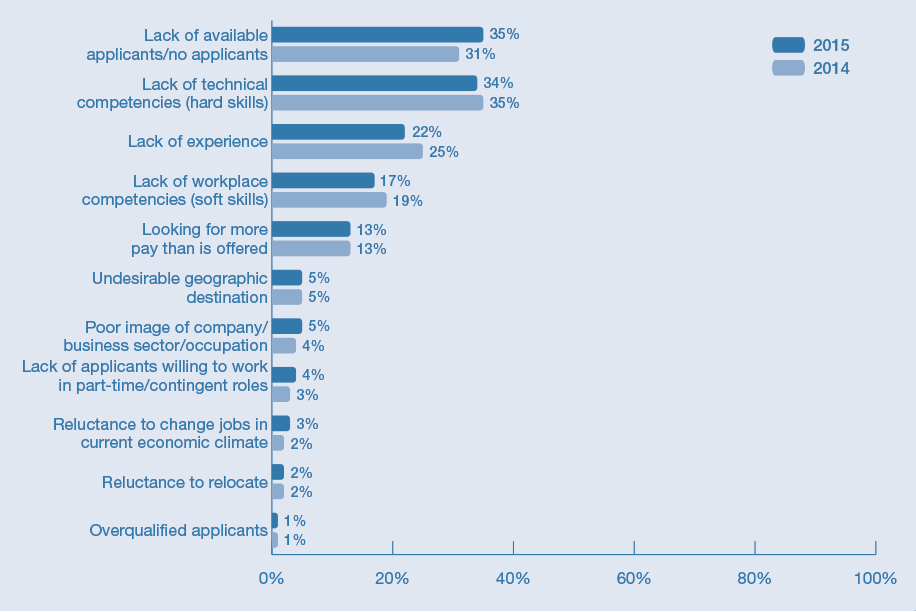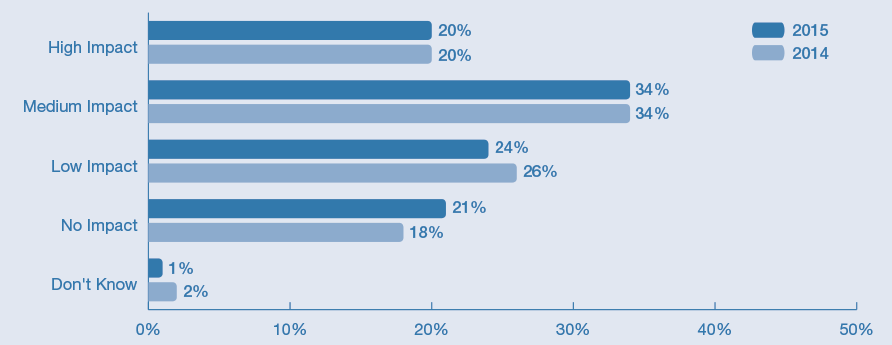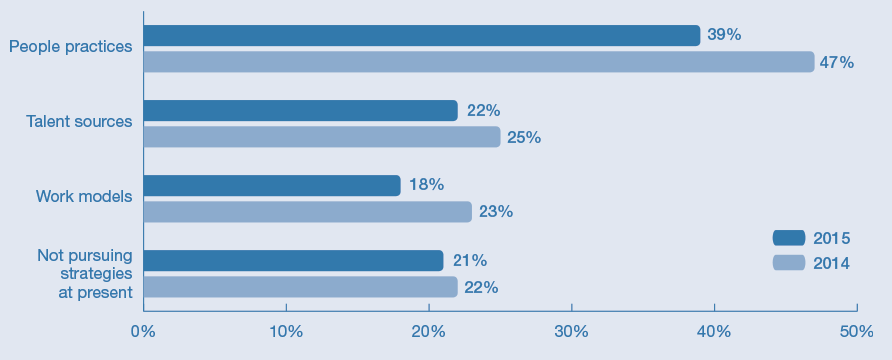Positions hardest to fill in 2015
According to Talent Shortage Survey by Manpower Group on about 42,000 recruitment managers in 42 countries, skilled trade workers have been leading the list of hardest jobs to fill not just for 2015 but for successive 6 years. Sales representatives and engineers follow the top as the 2nd and the 3rd. Such varied positions as technicians, driver, management fill in the remaining spots. Specifics are as below:

No.1. Skilled Trade Workers
No.2. Sales Representatives
No.3. Engineers
No.4. Technicians
No.5. Drivers
No.6. Management/Executives
No.7. Accounting and Finance Staff
No.8. Secretaries, PAs, Administrative Assistants, and Office Support Staff
No.9. IT Staff
No.10. Production/Machine Operators
Talent shortages beyond the averages
Around the globe, the number of employers reporting their talent shortage in 2015 is the highest of 38% within 7 years. 83% employers in Japan and 68% in Peru have hard time filling jobs comparatively to just 11% of Irish employers . While the number of employers with talent shortage report rises most sharply in Romania (to 61%), Greece (59%), Singapore (40%), and South Africa (31%), there witnesses a significant fall in the number of Argentinian employers with difficulty filling roles(to 37%). 9 out of 10 countries with least serious talent shortage difficulties are located in EMEA (Europe, Middle East and Africa region). The lowest difficulty level of filling jobs in Ireland is reportedly 11%, which, however, rises by 9% points on a year-over-year basis. Talent shortages are the problem for only 14% in Netherlands, Spain and U.K.
Difficulty level of filling job: A comparison with 2014
The level of difficulty confronted by employers handling talent shortages has reduced as compared with 2014.
Whilst the proportion of employers faced with recruitment difficulties due to talent shortage is rising over time, as suggested in the survey, employers are not suffering a rise in the difficulty level. Specifically, 7% of global employers report more difficulty filling positions than in 2014; 19% report less difficulty faced. Meanwhile, the level of difficulty is believed to be unchanged by 63% of employers.
Reasons for difficulty filling jobs

Reasons for difficulty filling jobs
According to 35% of employers, a lack of available applicants is the reason why they have issues filling jobs in 2015. The hard skills employers are looking for include those with industry-specific professional qualifications (16%), industry-specific skilled trades certification (13%).
22% of manpower hiring managers point out lack of experience as the reason for talent shortage.
17% report insufficient behavioural competencies. The most common soft skills candidates suffice are lacking professionalism (6%), lacking enthusiasm, motivation and eager-to-learn (6%).
Salary expectations, working locations, poor image of the business sector, company or occupations, etc. are also behind the talent shortages.
What are business impacts?

Impacts on client facing relationships
Most of employers with talent shortages report an impact on their ability to serve clients. In 2014, over half of the employers suffering a talent shortages reveal the high (20%) or medium (34%) impact on their client facing relationships. 21% feel none of impact on the ability to meet client needs.

Most likely impact on organization
Among employers feeling that the shortage of talents are impacting their client facing activity, the most likely aftermaths are expected to be reduced ability to serve clients (42%) and reduced competitiveness/ productivity (42%). Also, 30% anticipate a rise in employee turnover and 26% project lower worker engagement and morale. 25% expect lowered innovation and creativity, and the same proportion feels the consequence of higher compensation costs.
► What strategies are employers using to address talent shortages?

Strategies employers use to tackle talent shortages
The most widely adopted strategies for tackling global talent shortages in 2015 is developing the capability of existing employees, finding out new recruitment channels and utilizing different manpower pools. Specifically,
As a response to talent shortages, global recruitment managers are most likely to be taking new people practices (39%), though this proportion is lower compared to 47% in 2014.
22% employers choose to search for new talents sources for tackling the difficulties filling jobs, whilst 18% are carrying out alternative work models.
20% of global employers are revising their laborforce practices for more training as well as development of the existing manpower. The most common form of training is to pick up new skills (13%) and improve the existing skills (12%).
Also, there is a trend of leveraging non-traditional hiring practices, both externally and internally to the company, chosen by 18% in 2015 as compared to 13% in 2014 and 10% in 2013.
Some employers are giving improved benefits (5%) and/ or better starting pays (5%), whilst 5% are looking for redefining qualifying criteria to cover individuals with lack of some required skills/ qualifications yet potential to obtain them.
Pertaining to finding out new talent sources, 10% of global employers choose to explore the past unexploited talent pools, particularly young candidates (3%), candidates from outside of their immediate region (3%). Meanwhile, 8% of employers are selecting candidates without relevant skills at present yet the potential to learn and go far.
Employers reporting the implementation of alternative work models as an approach to talent shortages are most likely to be rising their focus on enhancing their talent pipeline (7%), though the proportion adopting this approach is lower than in 2014 (10%) and 2013 (13%). 5% are redesigning the existing work procedures – for instance, by sharing tasks between different workers.












Replies to This Discussion